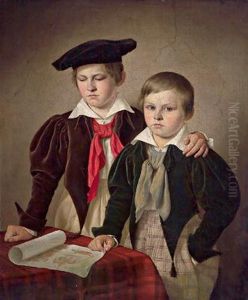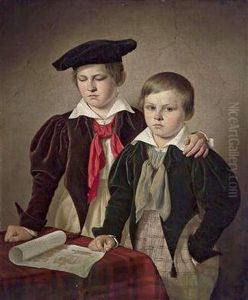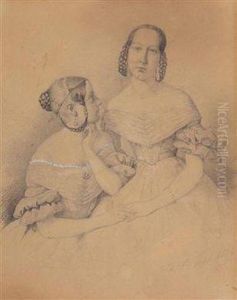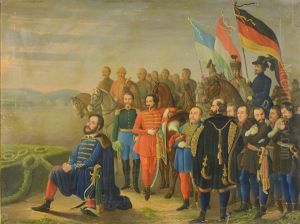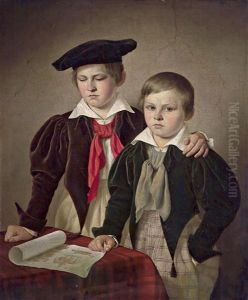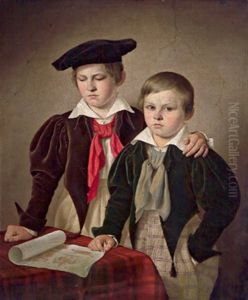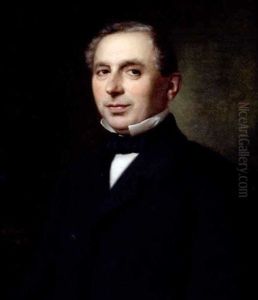Friedrich Keil Paintings
Friedrich Keil was a German artist, born in 1821, whose contributions to the world of art, though perhaps not as widely recognized as some of his contemporaries, remain significant within specific niches of European art history. His life spanned much of the 19th century, a period characterized by rapid changes in society, technology, and the arts. Keil's work, therefore, sits at an interesting crossroads of historical and aesthetic transformations, reflective of the evolving tastes and sensibilities of this era. He died in 1907, having witnessed and contributed to several phases of artistic evolution.
Keil’s artistic journey was marked by a dedication to the craft of painting, with a particular focus on landscapes and portraits. These genres were immensely popular in the 19th century, resonating with the Romantic movement's emphasis on emotion and nature, as well as the burgeoning bourgeois class's desire for personal memorabilia in the form of portraits. Friedrich Keil, however, managed to infuse his works with a distinct personal touch that set them apart from the more conventional outputs of his time. His landscapes often captured the transient beauty of the natural world with a sensitivity that suggested a deep reverence for his subject matter, while his portraits were celebrated for their ability to capture the essence of the individual.
The broader context of Keil's work is essential to understanding his place in art history. The 19th century was a period of profound change in the arts, with movements like Romanticism, Realism, and Impressionism successively challenging and transforming prevailing aesthetics and techniques. Keil's oeuvre, predominantly traditional in its style, provides an interesting counterpoint to the more radical works of his contemporaries. Yet, it is precisely this adherence to traditional forms and techniques that has allowed his work to offer a unique perspective on the era's artistic developments. Despite the overshadowing fame of other artists of his time, Keil's contributions have not gone unnoticed, with his works still being studied and appreciated for their quiet beauty and historical value.
Throughout his life, Friedrich Keil remained committed to his artistic vision, navigating the shifting landscapes of 19th-century art with a steadfastness that is evident in the quality and consistency of his work. His death in 1907 marked the end of an era for his particular style of painting, but his legacy lives on through his contributions to the German art scene of the 19th century. In the end, Keil's biography is not just the story of one artist's life and work but also a window into the broader story of 19th-century art, reflecting the complexities and nuances of a time of great change and creativity.
